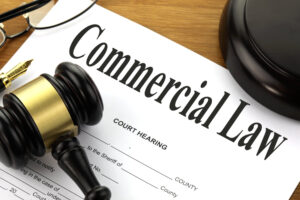Conveyancing is a complex and crucial process in property transactions, and even a small oversight can lead to significant consequences. To ensure a smooth and legally secure property transaction, it’s essential to be aware of common conveyancing mistakes and take steps to avoid them. In this article, we’ll highlight some of the most frequent errors people make during conveyancing and provide guidance on how to steer clear of them.
conveyancing solicitors are the cornerstone of property transactions, ensuring that the transfer of ownership is conducted legally and transparently. Avoiding common conveyancing mistakes is crucial to a successful and stress-free property transaction.
Mistake 1: Not Conducting Proper Research
Failing to research the property thoroughly, including its history and any potential issues, can lead to unpleasant surprises down the road. Ensure you know all relevant details before proceeding.
Mistake 2: Ignoring Legal Advice
Relying on DIY solutions or disregarding legal advice from a conveyancing solicitor can result in costly mistakes. Consult a professional to ensure all legal aspects are handled correctly.
Mistake 3: Rushing Through the Process
Conveyancing requires careful attention to detail. Rushing through the process can lead to errors, oversights, and missed opportunities to negotiate more favorable terms.
Mistake 4: Neglecting Due Diligence
Skimping on due diligence, such as property searches and surveys, can leave you vulnerable to hidden issues that may affect the property’s value or your ability to use it as intended.
Mistake 5: Not Reviewing Contracts Thoroughly
Contracts contain vital details that impact your transaction. Failing to review them carefully can lead to misunderstandings or obligations you weren’t aware of.
Mistake 6: Failing to Budget for All Costs
Conveyancing involves various costs beyond the property price. Failing to budget for legal fees, searches, surveys, and other expenses can lead to financial strain.
Mistake 7: Overlooking Title Issues
Title issues can result in disputes or complications regarding property ownership. Thoroughly reviewing the property’s title can prevent such problems.
Mistake 8: Skipping Property Surveys
Property surveys provide insights into the property’s condition. Skipping surveys could mean missing potential structural issues or defects.
Mistake 9: Lack of Communication
Effective communication with your conveyancing solicitor and all parties involved is crucial. Lack of communication can lead to misunderstandings and delays.
Mistake 10: Not Having a Contingency Plan
Unexpected issues can arise during conveyancing. Having a contingency plan in place ensures you’re prepared to handle any challenges that come your way.
Conclusion
Avoiding common conveyancing mistakes requires diligence, research, and professional guidance. By being aware of these pitfalls and taking proactive steps, you can navigate the conveyancing process with confidence and secure a successful property transaction.



